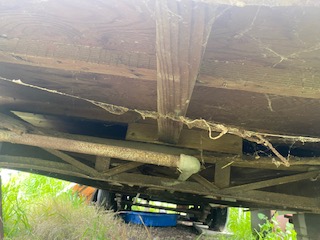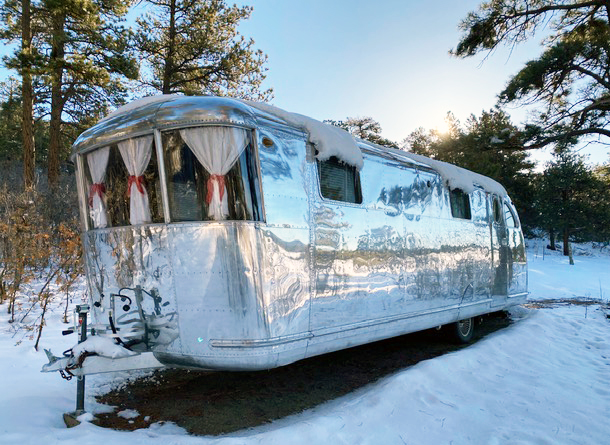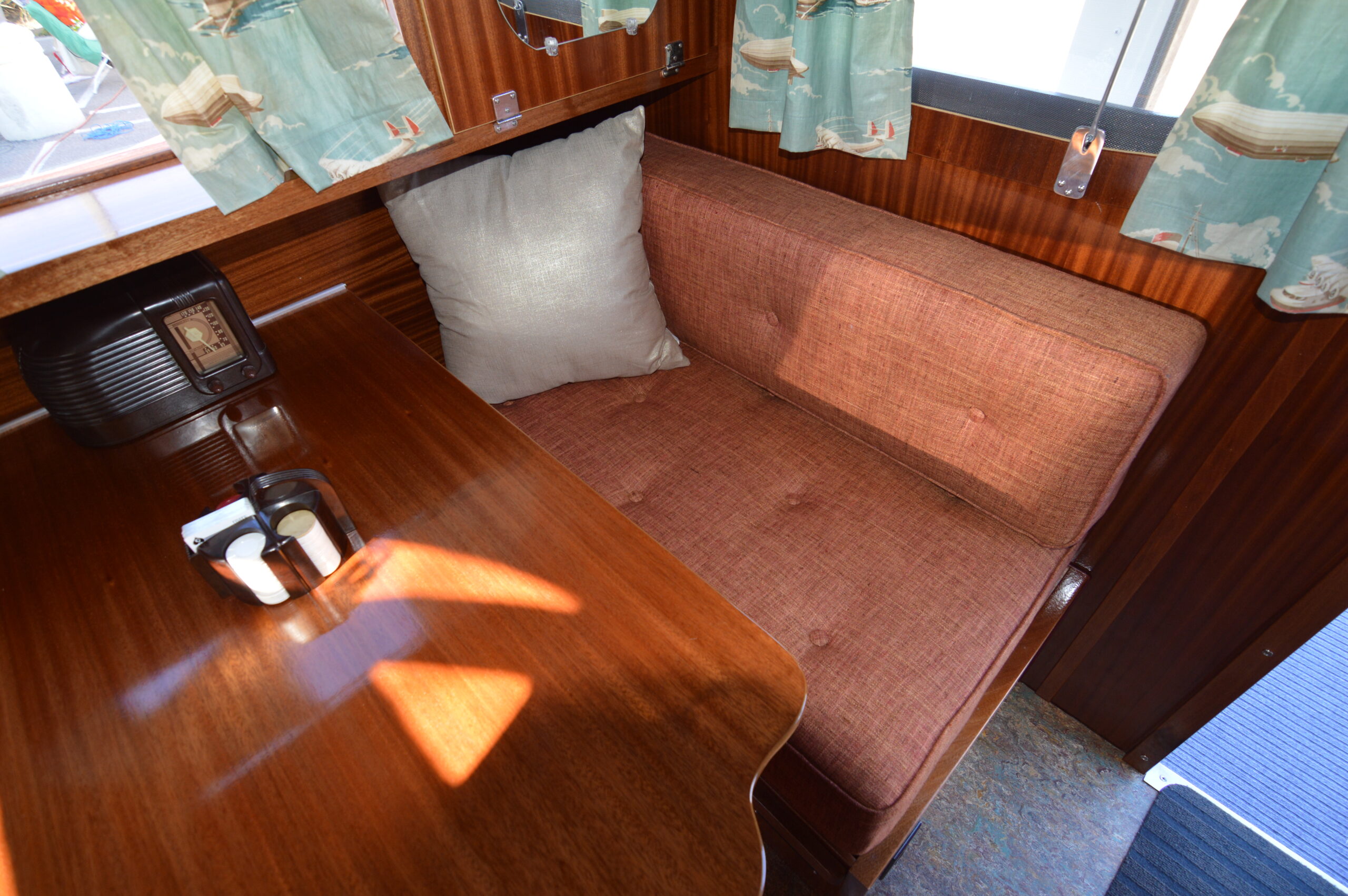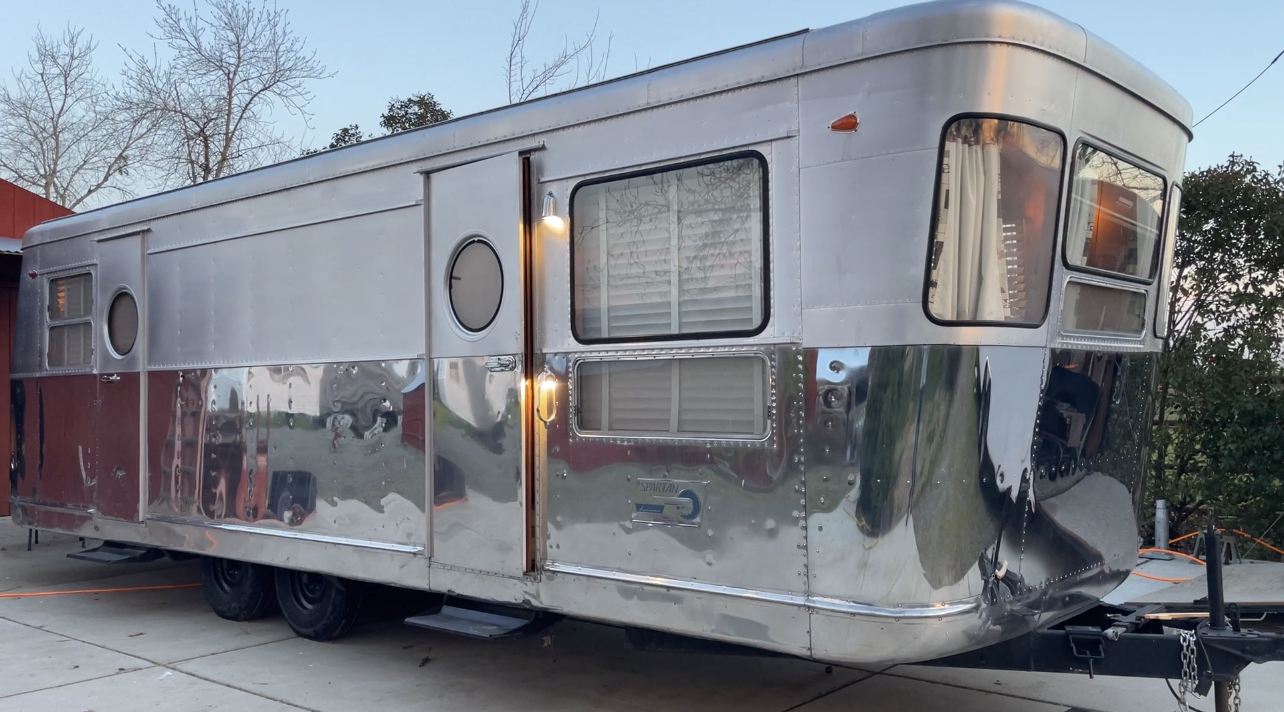There is no single right answer to the question of how to insulate the floor of your trailer. In some canned hams, there simply isn’t much room. Rigid foam insulation can be glued to the underside of the floor with spray adhesive. We avoid sprayed-in foam insulation (in the walls as well) because it glues everything together and makes future maintenance a nightmare. When the budget allows, RetroRVs also installs aluminum belly pans, which make the biggest difference in how warm the floor stays.

Many restorers primarily use fiberglass batt insulation under the floors (the pink stuff). After all, it’s what Airstream used. When we do a shell-off floor replacement, we unroll the insulation parallel to the frame members (front to back) with the paper side up. This provides enough vapor barrier while still allowing the wood subfloor to dry out should it ever get wet. On top of that, we lay 3/4-inch marine plywood (the subfloor) and secure it to the frame with elevator bolts. Depending on the frame, you may have to pre-drill the holes.
Before installing the belly pan, we cut through the fiberglass portion of the insulation on each side of the frame members. This way it can “puff” down into the belly space. The pink stuff is readily available, and 3-1/2 inches works well in a typical 4-inch belly cavity.
For belly pan material, we use .025 5052 H32 aluminum. It’s thick enough to be durable yet still bends easily around corners. Airparts Inc. (Airpartsinc.com) carries this aluminum in a 48-inch-wide coil. Order two pieces the length of your trailer plus a foot. The folks at Airparts will coil it up and ship it to you via FedEx (usually in one or two boxes). This allows you to install the belly pan from front to back in a single piece, with just one seam running down the middle of your trailer. Secure the belly pan to the frame with large-flange 3/16-inch blind aluminum rivets (Airpartsinc.com). Don’t use any sealant on the belly pan—if water gets in, you’ll want it to be able to drain out.
Here’s a trick that can save a lot of time: make a replica of the front frame of your trailer out of 2x4s, screwed to a scrap piece of plywood cut to match the curve of the subfloor. This gives you a jig to shape the front of your belly pan without lying on your back under the trailer. Place the front of the belly pan on top of the jig and anchor it with a couple of screws. Then make all the cuts and bends to fit the front of your trailer. When you slide it under, it will be ready to install.
Do the same for the back if needed (though this will require a seam across the belly pan toward the rear of the frame). Be sure to install the back piece first so the seam faces backward.
If you do a really good job fitting the belly pan nice and tight, consider drilling a few drain holes. Should water get into the belly space, you’ll want a way for it to escape. With all the time and love you’re putting into it, your restoration project will be set to last another 50 years.







